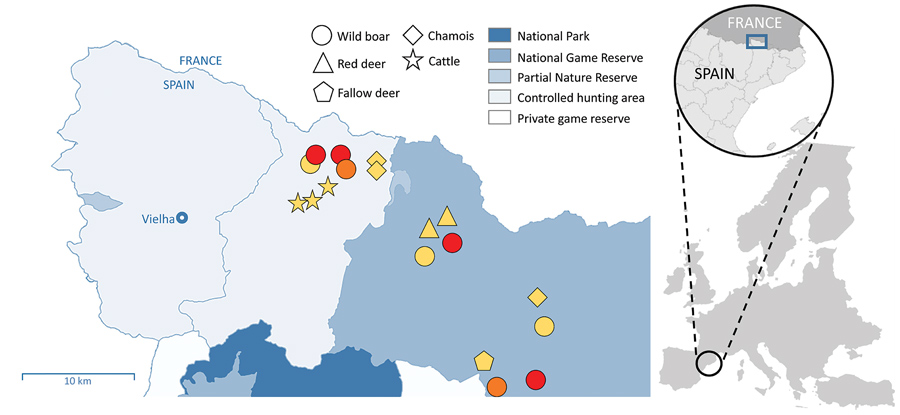Volume 25, Number 11—November 2019
Research Letter
Mycobacterium microti Infection in Free-Ranging Wild Boar, Spain, 2017–2019
Figure

Figure. Outbreak area for wild boar tuberculosis (TB) cases, Spain, June 2017–March 2019. Circles show cases of wild boars with TB lesions. Stars indicate the location of cattle herds with positive skin tests (not confirmed at slaughterhouse); triangles, pentagons, and diamonds show locations of Mycobacterium tuberculosis complex–seropositive ungulates (no tissue samples were obtained from these animals). Colors indicate etiologic agent identification: red, M. microti; orange, M. tuberculosis complex (species unidentified); yellow, unidentified. Different hunting areas are indicated. The border between Spain and France and the main village (Vielha) are labelled. Inset maps show location of the study area on the Iberian Peninsula.
Page created: October 16, 2019
Page updated: October 16, 2019
Page reviewed: October 16, 2019
The conclusions, findings, and opinions expressed by authors contributing to this journal do not necessarily reflect the official position of the U.S. Department of Health and Human Services, the Public Health Service, the Centers for Disease Control and Prevention, or the authors' affiliated institutions. Use of trade names is for identification only and does not imply endorsement by any of the groups named above.